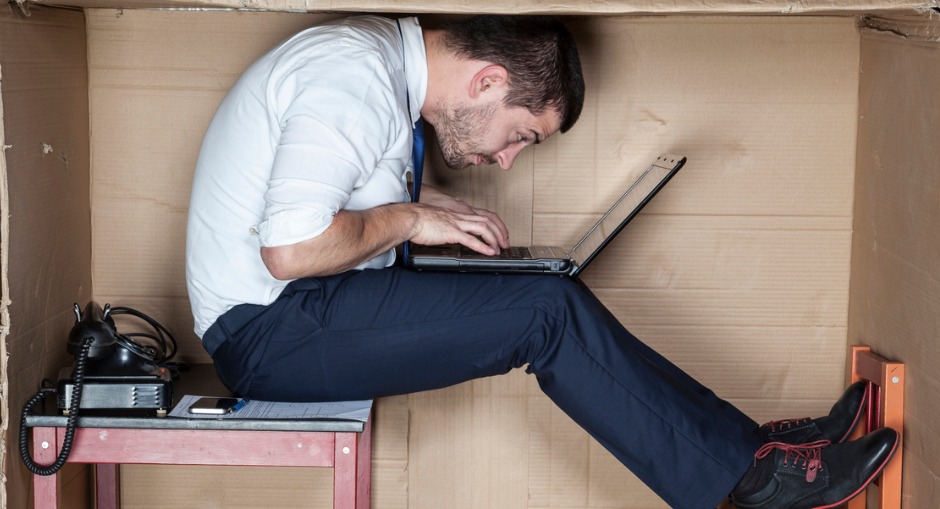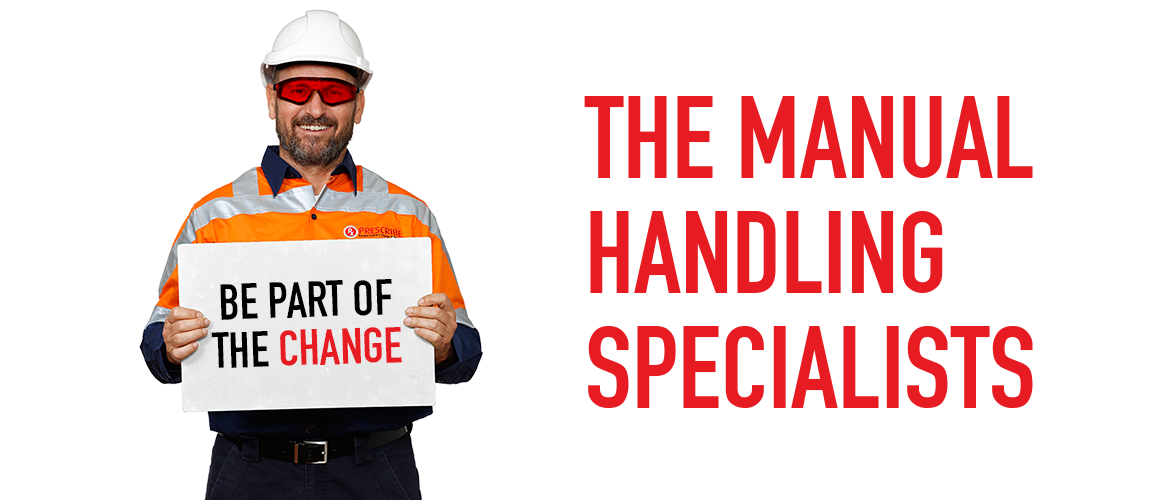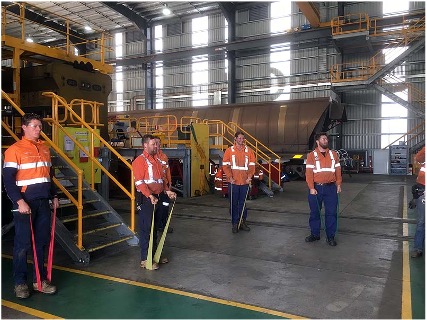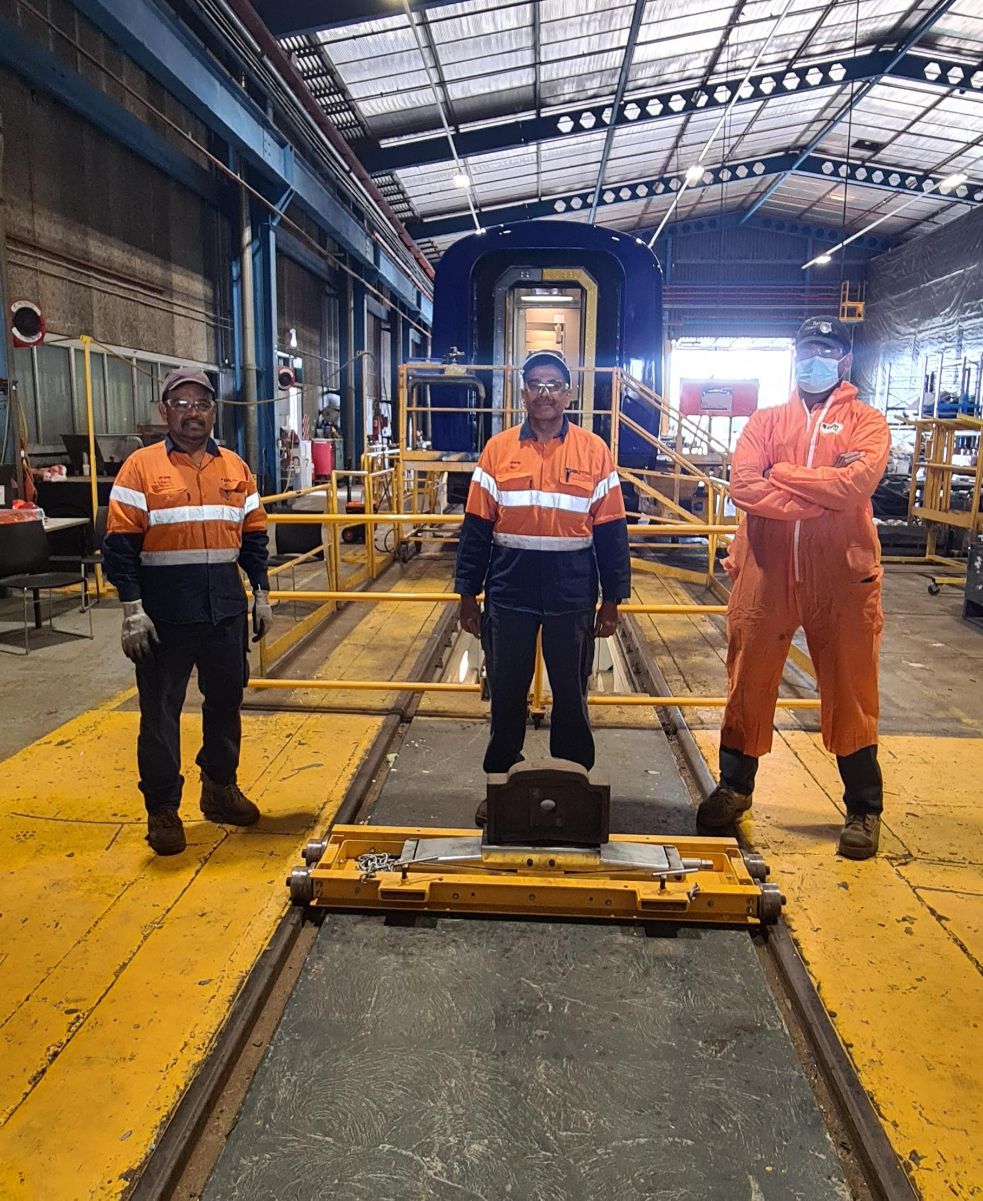The Manual Handling Specialists

Resources
Have you thought about the impact COVID-19 is having on musculoskeletal disorders?
August 6, 2021
Let us be honest, COVID-19 presents many challenges to business and we are hearing that musculoskeletal disorders are lower on most companies list of priorities at the moment, but they should not be. We learnt from the last restrictions, 6 to 12 months post outbreak, when life and work seemed to return to some new form of normality, that many businesses experienced a spike in work related musculoskeletal disorders (WMSD). Like all WMSD there is usually not one simple cause or solution this can be attributed to, but many companies hypothesised that when their workers returned to normal levels of productivity and physical demand, an increase of injuries was seen due to workers being distracted, deconditioned and potentially poorly supported in the prior 6-12 months.

Let us have a look at some of the factors at play here:
With the main methods of reducing the spread of the virus being implementing social distancing, restricting travel, indoor and outdoor gatherings, and services including physical contact, this changed a lot about how people both worked and moved for some period of time.
Most sport and fitness centres were and again are closed, but people are allowed to exercise and move outdoors with social distancing rules, office spaces are not open unless essential, and workers have now moved to working from home (WFH) where possible again.
There have been several benefits reported from WFH arrangements, less time spent commuting, better work output as a result of fewer interruptions, fewer sick days and depending on the organization, flexible schedule, and better work-family balance. Despite the benefits, we have had many companies that we assist with the following issues regarding occupational health; excess working hours, workers continue working when ill, inadequate equipment available and altered working postures. Several psychosocial factors have also been reported, such as the feeling of isolation and possible conflict between work and family life.
The magnitude of the COVID-19 outbreak, combined with the sudden change in workplaces for unknown periods of time, has seen many workers pay less attention to workplace safety and ergonomics, along with neglecting their physical and functional health. We noticed this impacting companies following the last return to the ‘normal’ operations, with declines in musculoskeletal health, personal health and an increase in injuries not commonly observed prior to COVID-19.
There have been several risk factors documented in the literature for developing musculoskeletal pain including individual factors and inadequate workplace equipment and ergonomics [1]. One of the individual factors, that could be influenced by the lockdown restrictions, is low physical activity and exercise [2,3]. Lack of exercise and a sedentary lifestyle is a known risk factor for poor health, premature death, and several chronic diseases and musculoskeletal disorders [2,4].
Increasing physical activity we know will see several benefits for workers, such as reducing work-related and general pain [6,7], better work ability [8] and better mental health [9].
It is well reported that our quality of life, well-being, and mental health problems have worsened during COVID-19 [10], exercise should play an important role in how we prevent both physical and mental health issues and complex biopsychosocial issues and musculoskeletal disorders in the future.
Another factor associated with musculoskeletal pain is workplace ergonomics. There are several theories about the mechanisms of pain, especially in the case of cognitive work with low physical demands, such as office workers [11,12,13] and the association between workplace ergonomics and the prevalence of pain has been observed widely [8].
What do I have to do for my workers working from home?
Safe Work Australia highlight that the model WHS laws still apply if workers work somewhere other than their usual workplace, for example, from home.
You have duties to ensure the health and safety of your workers, even if they are working from home. This includes but is not limited to;
- providing guidance on what is a safe home office environment, including what a good workstation set up looks like, why workers should not be sedentary all day and how to avoid this,
- workers are required to familiarise themselves and comply with good ergonomic practices, consistent with any workplace policies and procedures, for example requiring workers to complete a workstation self-assessment checklist and provide their responses to you,
- maintain regular communication with workers,
- provide access to information and support for mental health and wellbeing services.
So where to now with COVID-19 and musculoskeletal disorders?
We need to learn from the last 18 months, the impact a change in both working environment and the way we work can have on musculoskeletal disorders. Go back and review the reported injuries, aches and pains when your operations ramped back up, or alternatively for the office workers the musculoskeletal disorders that were experienced from having your workers sitting at home on the coach with a laptop for a number of months.
Take this data and set up a plan to proactively address these issue with your workers, this will be different for each business, but sticking your head in the sand and just ‘managing’ your injuries well so that do not become a statistic will not resolve the problem in the long run. Consult with your workforce and find out how the changes have impacted their body and associated pain and put a strategy in place to prevent the same issue happening again after this latest round of lockdowns.
If you would like assistance with creating a system to prevent musculoskeletal injuries, while enabling you to measure behaviour change and proactively address your injury risk Prescribe have been doing just this both electronically and through face to face / onsite services (restrictions permitting) the last 18 months. So give us a call on 1300798771 or email us at info@prescribeaustralia.com.au

References:
| [1] | Kaliniene G , Ustinaviciene R , Skemiene L , Vaiciulis V , Vasilavicius P . Associations between musculoskeletal pain and work-related factors among public service sector computer workers in Kaunas County, Lithuania. BMC Musculoskelet Disord. 2016;17(1):420. |
| [2] | Holth HS , Werpen HK , Zwart JA , Hagen K . Physical inactivity is associated with chronic musculoskeletal complaints 11 years later: results from the Nord-Trøndelag Health Study. BMC Musculoskelet Disord. 2008;9:159. |
| [3] | Lippi G , Henry BM , Sanchis-Gomar F . Physical inactivity and cardiovascular disease at the time of coronavirus disease (COVID-19). Eur J Prev Cardiol. 2020;27(9):906–8. |
| [4] | Thorp AA , Owen N , Neuhaus M , Dunstan DW . Sedentary behaviors and subsequent health outcomes in adults a systematic review of longitudinal studies. Am J Prev Med. 2011;41:207–15. |
| [5] | Proper KI , Singh AS , van Mechelen W , Chinapaw MJ . Sedentary behaviors and health outcomes among adults: a systematic review of prospective studies. Am J Prev Med. 2011;40:174–82. |
| [6] | Blangsted AK , Søgaard K , Hansen EA , Hannerz H , Sjøgaard G . One-year randomized controlled trial with different physical-activity programs to reduce musculoskeletal symptoms in the neck and shoulders among office workers. Scand J Work Environ Health. 2008;34(1):55–65. |
| [7] | Moreira-Silva I , Teixeira PM , Santos R , Abreu S , Moreira C , Mota J . The Effects of Workplace Physical Activity Programs on Musculoskeletal Pain: A Systematic Review and Meta-Analysis. Workplace Health Saf. 2016;64:210–22. |
| [8] | Martinez M , Latorre M . Health and work ability among office workers. Revista de saúde pública. 2006;40:851–8. |
| [9] | Mikkelsen K , Stojanovska L , Polenakovic M , Bosevski M , Apostolopoulos V . Exercise and mental health. Maturitas. 2017;106:48–56. |
| [10] | Pieh C , Budimir S , Delgadillo J , Barkham M , Fontaine JR , Probst T . Mental health during COVID-19 lockdown in the United Kingdom. Psychosomatic Medicine. 2020 – Volume Publish Ahead of Print. |
| [11] | Knardahl S . Psychophysiological mechanisms of pain in computer work: The blood vessel-nociceptor interaction hypothesis. Work Stress. 2002;16:179–89. |
| [12] | Hägg G . Static work load and occupational myalgia –A new explanation model. Electromyographical kinesiology. 1991:141-4. |
| [13] | Wahlström J . Ergonomics, musculoskeletal disorders, and computer work. Occup med. 2005;55:168–76. |
| [14] | van Niekerk S , Louw QA , Hillier S . The effectiveness of a chair intervention in the workplace to reduce musculoskeletal symptoms. A systematic review. BMC Musculoskeletal Disorders. 2012;13(1):145. |
| [14] | van Niekerk S , Louw QA , Hillier S . The effectiveness of a chair intervention in the workplace to reduce musculoskeletal symptoms. A systematic review. BMC Musculoskeletal Disorders. 2012;13(1):145. |
Contact Us
Are you ready to get started? contact us now via phone now or alternatively, feel free to contact us via our form to the right.




